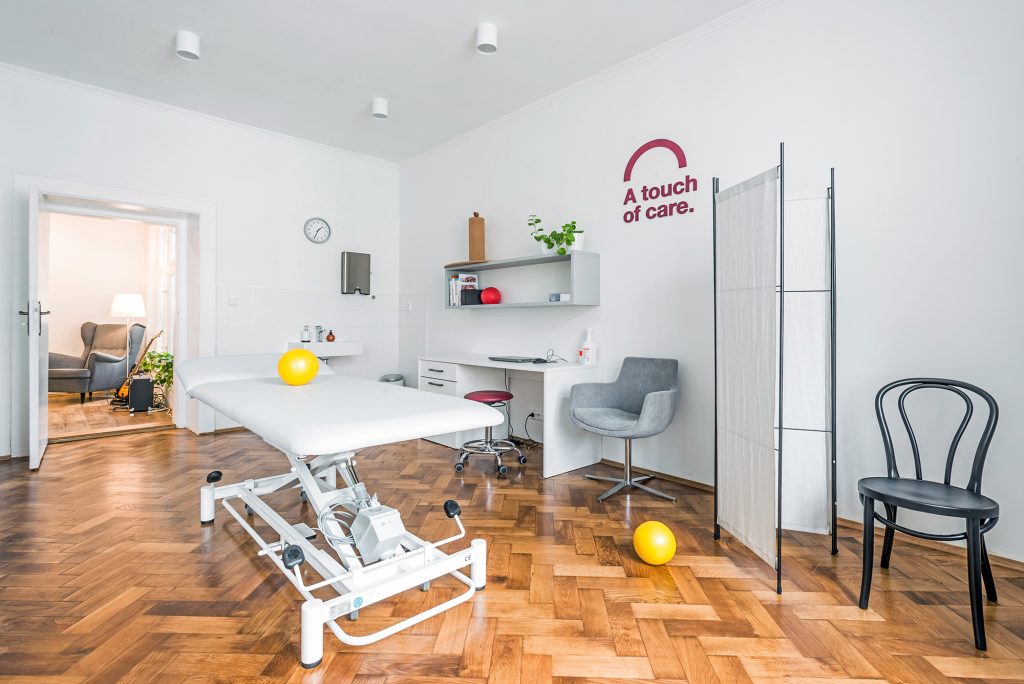Ankle Fracture and Its Treatment
The ankle joint plays a crucial role in walking, as it helps transfer body weight from the leg to the ground. When the ankle is injured, it significantly disrupts the stability of not just the joint itself but also the entire body’s posture. An ankle problem affects weight distribution while standing, alters walking patterns, and causes poor transmission of information from the foot to higher body structures. This can lead to muscle imbalances throughout the leg, affecting the knees, hips, pelvis, and spine.
Is it a Ligament Injury or a Fracture?
Ankle injuries can be broadly divided into soft tissue injuries and fractures.
- Soft tissue injuries: More information on this topic can be found in a separate article.
- Ankle fractures: You can read more about fractures below.
Types of Ankle Fractures
Fractures in this area are among the most common lower limb fractures, often occurring even with typical sprains. To choose the appropriate therapy, it’s essential to determine the extent of the damage and any dislocation (shift of the bone fragment). Ankle fractures can be categorized as follows:
- Fracture of the distal tibia: This can involve a fracture of the inner, outer, or both ankles simultaneously.
- Luxation fractures: These occur similarly to sprains but involve fractures of both the inner and outer ankles, often accompanied by varying degrees of ligament damage.
- Fractures of the talus bone: These typically result from a direct impact along the axis of the leg. Since most of the talus is covered by joint surfaces, its healing capacity is limited, and there’s a risk of necrosis, making precise diagnosis essential.
Diagnostic Methods for Ankle Fractures:
- X-rays: To determine the extent of the injury.
- CT or MRI: For further examination of soft tissue damage around the joint.
Types of Fractures:
- Incomplete (crack or fissure)
- Complete
- Comminuted (multiple fragments)
- Open vs. closed
- Pathological (due to weakened bone from a tumor, inflammation, or osteoporosis)
- Stress fracture: Caused by repetitive stress on healthy bones, often seen in athletes.
Symptoms of an Ankle Fracture:
- Significant pain in the ankle (often more intense than a sprain)
- Rapid swelling
- Bruising or hematoma
- Inability to bear weight on the foot due to pain
- In cases of dislocation, visible deformity of the ankle and possibly a cracking sound during movement
Treatment Based on the Severity of the Fracture:
For uncomplicated ankle fractures, treatment typically involves immobilization with a cast or brace for 6-8 weeks, during which the patient must avoid bearing weight on the foot by using crutches.
In more complex or displaced fractures, surgery may be necessary to realign and fix the bones using screws, plates, or wires. After surgery, patients must walk with crutches and avoid putting weight on the foot for 2-3 months.
Importance of Walking Correctly with Crutches
Walking with crutches, without bearing weight on one leg, is physically demanding, especially for the upper body, and can overload the healthy leg and alter movement patterns. Normal walking involves alternating limbs, with the right leg moving forward while the left arm moves in coordination, and the trunk rotates slightly. However, after an ankle fracture, using crutches disrupts this walking pattern, leading to strain on other body parts. Learning proper crutch technique is crucial to avoid further issues or pain in other areas of the body.
Treatment Before Cast Removal
During cast immobilization, it’s essential to exercise other muscles to compensate for the immobility and reduce overload on other parts of the body. We can guide you on how to strengthen these muscles, even early after the injury. We will also focus on relaxing the muscles of the upper body, neck, and stabilizing the shoulder blades, hips, and core.
Post-Cast Removal Treatment
Once the cast is removed, there will likely be significant limitations in ankle movement, pain, tight tissues, and poor blood circulation in the muscles due to the prolonged immobility. We can help by unlocking the small joints of the foot and ankle, releasing tight fascia, relaxing tense muscles, and strengthening muscles that have been inactive. If surgery was required, we’ll teach you how to care for the scar, which is crucial for optimal healing.
Lymphatic Drainage for Swelling
At the start of more intense rehabilitation and walking without crutches, swelling may occur at the injury site. Swelling can be managed with manual lymphatic drainage performed by a trained physiotherapist. The effect can be enhanced with vascular exercises, deep breathing, and lymphatic kinesiology taping.
Restoring Ankle Stability
An essential part of rehabilitation is restoring proper walking patterns, helping you overcome limping as soon as possible. Ankle stability involves improving proprioception (awareness of joint position) and overall body awareness during both rest and movement. We focus on functional integration of the muscle chains from the toes to the trunk, ensuring that your body regains strength and coordination. This approach will enable you to return to daily activities more quickly and reduce the risk of future injuries or complications.







